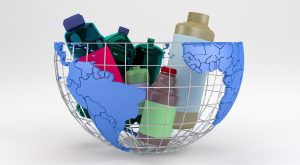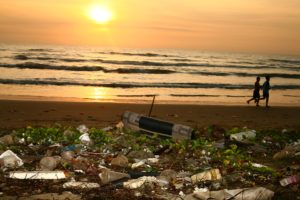The environmental cost of plastics in consumer goods is 3.8 times lower than that of alternative materials
Construction, automotive, real estate, medical, food, sports, education…. Almost all industrial sectors rely on plastics to enable their development and do business. However, this use must be based on the circular economy, i.e., less dependence on virgin materials and thus greater recyclability. To achieve this, it is imperative that the entire supply chain of the plastics industry remains involved, from manufacturing and design to end-of-life management.
To achieve a true circular economy, companies and organisations must implement solutions that prevent plastics leakage into the environment, increase recycling and reduce resource extraction. So, activities must be implemented to reduce their carbon footprint and even train their employees in sustainability. The report ‘Sustainable in the Plastic Supply Chain‘, issued by British Plastics Federation (BPF), focusses on this and makes several recommendations for the manufacturing of sustainable plastics:
- Invest in energy efficient technology to reduce greenhouse gas emissions.
- Use resources efficiently, reducing use of material, water and waste in the processes
- Follow sustainable design principles and guidelines
- Maximise the use of recycled content
- Eliminate the loss of plastic pellets
Recycling plastics reduces gas emissions by up to 80%
The circular economy also makes a significant contribution to fighting climate change, offering an approach that reduces greenhouse gas emissions. Relevant policies such as the ‘Green Deal’ strategy launched by the European Union to achieve the goal of carbon neutrality by 2050 should be noted. Regarding this issue, it must be highlighted that between 28% and 34% of global emissions are related to food production, 24% being caused by agriculture and between 5 and 15% by the rest of the supply chain. Therefore, it must be taken into account that recycling plastics reduces a significant amount the emission of these gases, a 30% to 80%, duringmanufacturing and processing.
Other topics of interest: Why circular economy is essential in the post-COVID-19 recovery

Source: BPF Report
The BPF presented a Climate Change Agreement for the UK plastics sector in 2008, which includes agreements between industry and government. This has resulted in considerable reductions in energy use, helping reduce emissions related to the manufacture of the materials. And so, the plastics sector has managed to surpass the initial target of achieving a 14% energy improvement by reaching a 19%. This translates into savings of almost 555,000 tonnes of carbon emissions during 2017 and 2018, which is equivalent to one year’s energy use for around 6,400 households.
Related to this issue, it should be noted that the plastics converter industry plays a crucial role in achieving a more sustainable economy for this sector. One of the key solutions is to increase the volumes of recycled polymers in new products on the market. Currently, around 5 million tonnes are being reused annually at European level. However, it is worth remembering that the European Commission, together with the Circular Plastics Alliance, has launched an initiative to reach 10 million tonnes of recycled polymers reused by 2025.
Plastic packaging is more sustainable than other materials
Although initially it might seem otherwise, the environmental cost of plastic in consumer goods is 3.8 times lower than that of the alternative materials that would be needed to replace plastic. This is because non-plastic food packaging alternatives increase energy use by 2.2 times, CO2 emissions by 2.7 times and the weight of packaging by 3.6 times. Therefore, alternative materials to plastic would produce 2.7 times more greenhouse gas emissions over their lifetime. This is mainly due to the fact that plastic packaging fulfils the same function with significantly less mass of material per functional unit than alternative materials.
Despite this, when developing packaging eco-design principles must be adopted in the plastics supply chain. Designing sustainable packaging means that the following aspects are included:
- Easily recyclable
- Resource efficient
- Including recycled content
- Reusable
- Contributing to consumer behaviour, e.g., portion control or reducing food waste.
Other topics of interest: Plastics industry is making “significant” progress in incorporating recycled content into packaging







